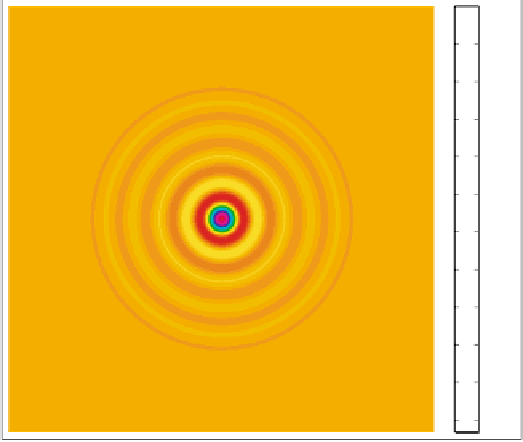Image Processing Reference
In-Depth Information
0.
9
0.8
0.7
0.6
0.5
0.4
0.3
0.2
0.1
0
−0.1
Fig. 8.5. The interpolation function corresponding to a circular characteristic function. A
cross section of this function is shown in Fig. 8.4
The most important reasons why sinc functions fall out of grace in practice are,
however, as follows:
, which is too slow, yielding very large filters.
ii) They are not direction isotropic, meaning that in 2D and higher dimensions,
sharp changes of image intensities with well-defined directions are not treated
by a sinc interpolator in the same manner for all directions, creating artifacts.
We show this in Sect. 9.4 via Example 9.3.
iii) They introduce ringing near sharp changes of image intensities, creating arti-
facts.
Point i) is a sufficient reason to look for other interpolation functions in 1D. In 2D
and higher dimensions, the subsequent points are so imposing that sinc functions are
almost never the first choice.
Consider the functions that look like tents with the maximum 1
i) They decrease as 1
/
r
⎧
⎨
⎩
1
−
t,
if
0
<t
≤
1
μ
(
t
)=
1+
t,
if
−
1
≤
t
≤
0
(8.12)
0
,
otherwise;
as illustrated by Fig. 8.6. This is the linear interpolation function, which, because
of its appearance, is sometimes called a
tent function
. Equation (8.15) suggests the
weighting of the shifted versions of the continuous interpolation function,
μ
, with the
known image values
f
on the grid
r
l
. When these amplified functions are summed,
the continuous signal
f
(
r
) is obtained from its discrete values
f
(
r
l
). This process


